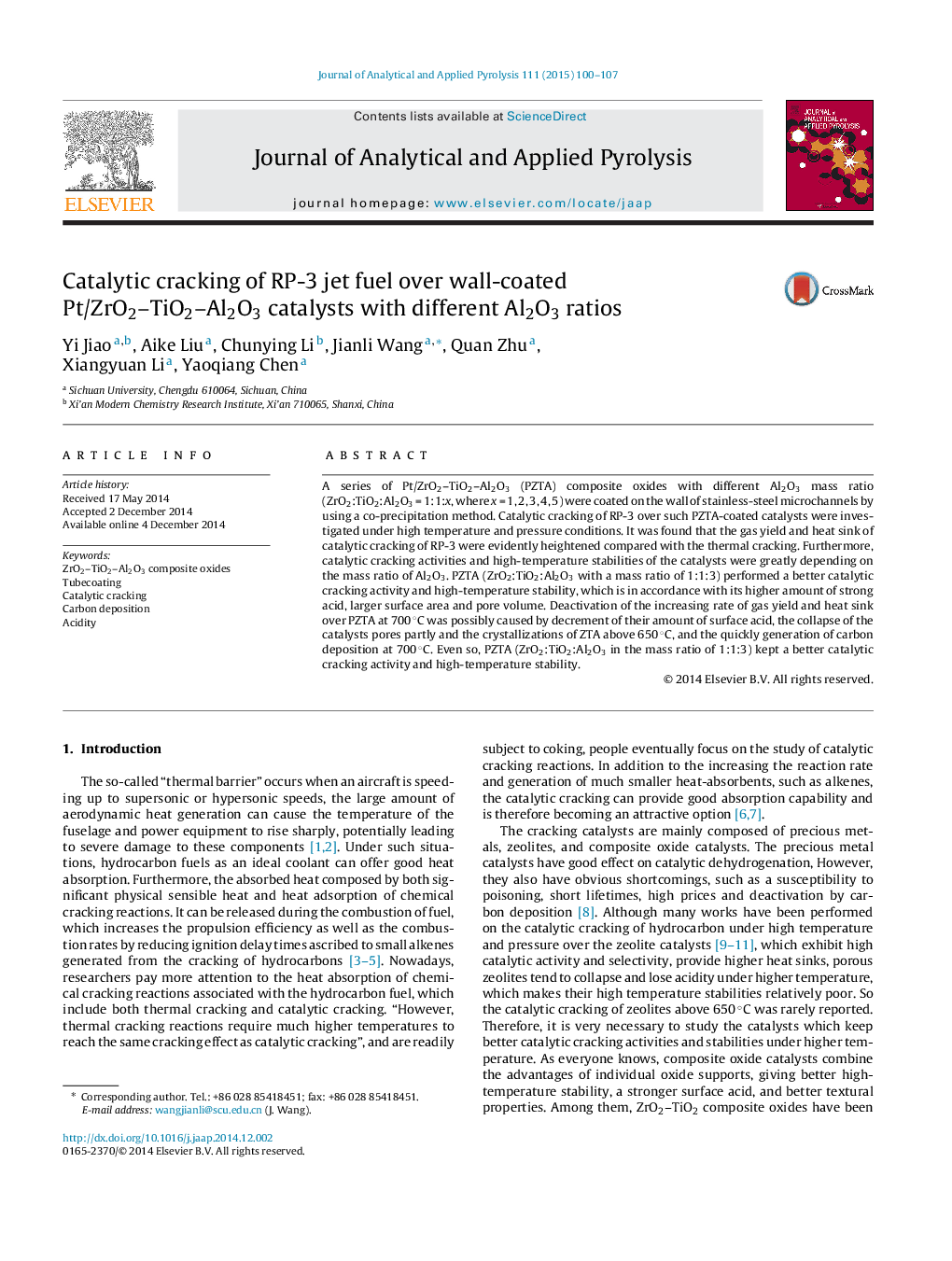| Article ID | Journal | Published Year | Pages | File Type |
|---|---|---|---|---|
| 1196708 | Journal of Analytical and Applied Pyrolysis | 2015 | 8 Pages |
•ZrO2–TiO2–Al2O3 composite oxides were introduced into cracking of jet fuel.•The surface acidity provided a guarantee for activity of cracking reaction.•The centralized strong acidic sites provided a guarantee for selectivity.•The heat sink over Pt/ZrO2–TiO2–Al2O3 (1:1:3) reached by 3.88 MJ/kg at 750 °C.•A sharply deactivation is mainly caused by the quick generation of coking.
A series of Pt/ZrO2–TiO2–Al2O3 (PZTA) composite oxides with different Al2O3 mass ratio (ZrO2:TiO2:Al2O3 = 1:1:x, where x = 1, 2, 3, 4, 5) were coated on the wall of stainless-steel microchannels by using a co-precipitation method. Catalytic cracking of RP-3 over such PZTA-coated catalysts were investigated under high temperature and pressure conditions. It was found that the gas yield and heat sink of catalytic cracking of RP-3 were evidently heightened compared with the thermal cracking. Furthermore, catalytic cracking activities and high-temperature stabilities of the catalysts were greatly depending on the mass ratio of Al2O3. PZTA (ZrO2:TiO2:Al2O3 with a mass ratio of 1:1:3) performed a better catalytic cracking activity and high-temperature stability, which is in accordance with its higher amount of strong acid, larger surface area and pore volume. Deactivation of the increasing rate of gas yield and heat sink over PZTA at 700 °C was possibly caused by decrement of their amount of surface acid, the collapse of the catalysts pores partly and the crystallizations of ZTA above 650 °C, and the quickly generation of carbon deposition at 700 °C. Even so, PZTA (ZrO2:TiO2:Al2O3 in the mass ratio of 1:1:3) kept a better catalytic cracking activity and high-temperature stability.
